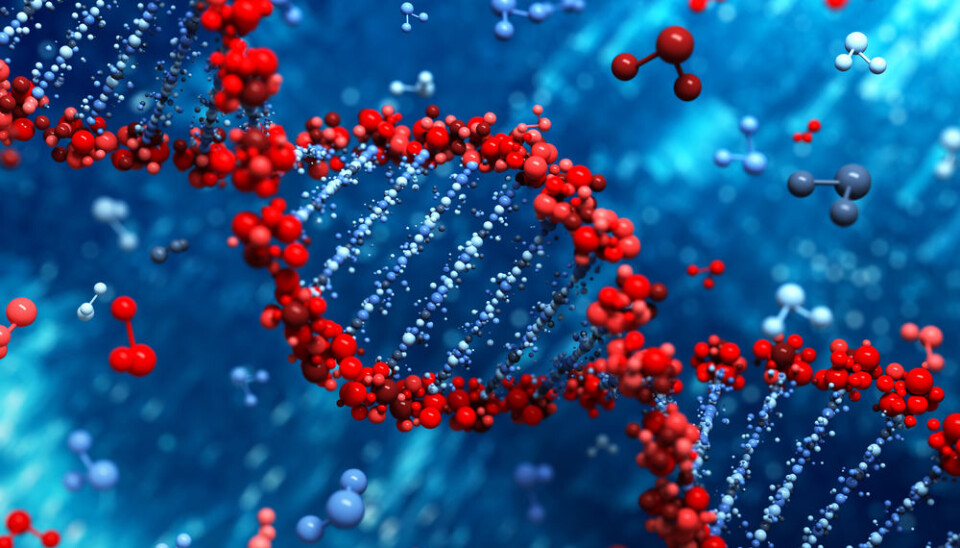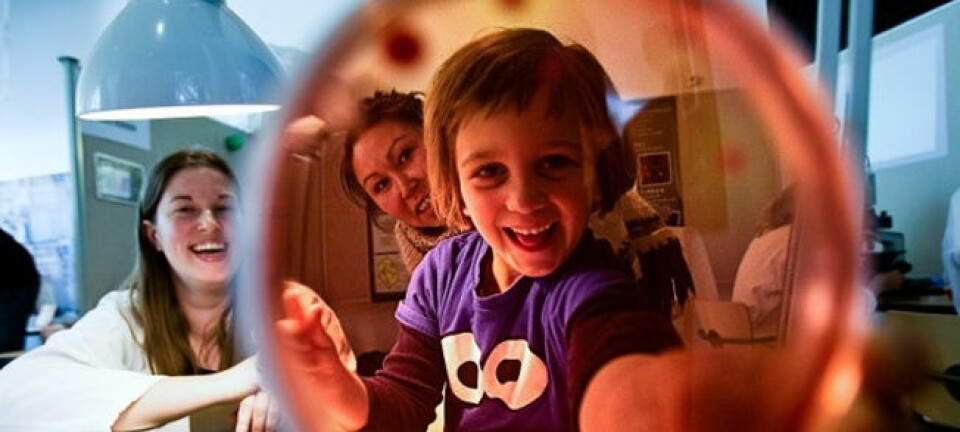
New materials will change the world
What will be the next big thing in materials science? A group of researchers will discuss that during the ESOF2014 conference in Copenhagen.
Throughout human history, new materials have revolutionised our world. Whenever craftsmen, manufacturers and scientists got hold of new materials -- textiles, rubber, stainless steel and lithium, for instance -- it allowed them to create new things that had not been possible before.
But what will be the next new materials that will change our world?
That’s one of the questions that top researchers from around the world will discuss when the Euroscience Festival 2014 (ESOF2014) conference kicks off in Copenhagen on 21 to 26 June.
The conference will address eight major themes in science and the discussion about 'Materials and Virtual World' is one of them. One of the researchers who will talk about future materials is Karin Margarita Frei, a senior researcher in textiles and other materials at the National Museum of Denmark.
Her research shows how a material that is thousands of years old can find new uses in the hands of a researcher. But her research into the history of textiles also focuses on the extent to which human lives were revolutionised when textiles were invented as a material.
“A completely new world opened up for them,” says Frei. “People could now live in many different places because they had clothes to wear and clothing is necessary for surviving in cold places.”
Textile research gives answers to forensic scientists
As the new material made it possible to travel to new and colder places it changed society.
“Wool became a luxury product when leather clothing gave way to spun and woven wool,” says Frei.
Wool was not something you simply had -- it needed comprehensive processing. Merchants travelled to get the best textiles and this resulted in some meetings between cultures that wouldn’t have taken place if the material hadn’t been introduced, says Frei. In fact, wool helped develop societies, she says.
Frei has followed the movement of textiles through past landscapes by measuring strontium isotopes that she has shown can be measured in woollen textiles. Measuring the isotopes gives her very precise information about where the wool came from as the isotopes reveal where the animal lived while its fleece still grew.
While Frei used strontium isotopes to find detailed information about textiles of the past the very same technique can also be used on human hairs in modern forensic medicine to map where a person has lived.
DNA hard disks can survive for millennia
The discussions at ESOF2014 will not only deal with the past. Dr Nick Goldman, a senior researcher at the European Molecular Biology Laboratory's centre in Britain, will talk about his pioneering research in one of the materials of the future. He and his team of researchers have shown that it’s possible to store computer data in DNA molecules.
“DNA as a chemical molecule has existed for billions of years but what’s new is that people can use it in a useful way,” he says. “It's the same with other materials: Humans did not invent iron but it is only a few centuries ago that we learned how to use it really efficiently. So I certainly believe we can say that DNA is a new material.”
Goldman makes use of the construction of DNA molecules which are made up of four nucleotides -- A, G, T and C -- in a certain order. While a traditional computer memory is made up of switches that are either at 1 or 0 in a certain sequence DNA offers more options and by rewriting a computer program from 1 and 0 to A, G, T and C, Goldman’s team of researchers has been able to store a picture, a sound recording and Shakespeare's sonnets in DNA strips and later read them again from the molecules.
“Ideally, the DNA must be kept in dark, dry and cold conditions -- in those conditions the DNA can survive for thousands of years,” says Goldman. “A computer hard disk lasts three to five years, a DVD perhaps ten years. If you have a diskette, there are probably no computers that can read the data because technology has developed. But there’ll always be a machine that can read DNA for as long as humans are interested in their health and in where we came from.”
He emphasises that the research group's DNA carrying stored data will not be able to affect living organisms and that his research exclusively uses DNA molecules for another purpose.
Quantum computers will give secure communication
Another challenge for the researchers at ESOF2014 is finding the right material for developing new technologies, says Elham Kashefi. An associate professor at the School of Informatics at the University of Edinburgh, she studies quantum computers. Unlike normal digital computers, quantum computers make use of quantum mechanics to process data which makes processing power much faster.
Kashefi says a computer build on the laws of quantum physics will not only be far faster but also far more secure due to the nature of quantum states.
“If you have a normal computer and read a 0 or a 1 they’ll still be 0 and 1-- but if you have a polarised photon, your reading of it will change it,” says Elham Kashefi. “If you're a hacker then it means that when you read a system you’ll disturb it and change it which will make an alarm go off somewhere.”
While researchers have successfully created small quantum computers it’s still a challenge to build them larger and get them to work at the same time,” says Kashefi. “And there's yet another challenge: building the computer of a material that won't disturb the quantum mechanics.”
“Some materials have proven themselves to better than others but I can't say that we know at this stage which is the best material,” says Kashefi.
You can read more about the three researchers' presentations at the ESOF2014 conference at www.esof2014.org.
Video: Alphafilm
Translated by: Michael de Laine









